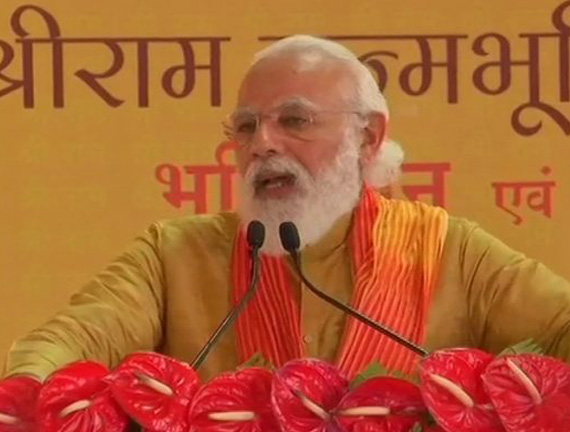

The subtle line separating the
religion and the State has been breached. By performing the
bhoomi pujan
of the Ram Temple in Ayodhya, Prime Minister Narendra Modi has set the clock
back. His act has taken the secular country to a path not envisaged in the
Constitution of India. It is in line with the ideology of the party in power
from whose vocabulary ‘secularism’ seems to have been removed. It is important
to look at the issue from what the Supreme Court of India said in its verdict allowing
construction of the temple at the site where Babri Masjid stood for over four
centuries. The apex court had termed the masjid demolition a criminal act. Though
construction of Ram temple is the logical result of the Supreme Court judgment,
one cannot ignore the traumatic memories of millions of people caused by that
outrageous act.
The pertinent question is whether
separation of religion and state exists in secular India? Eighteenth and
nineteenth century philosophers like Voltaire and Nietzsche had predicted
decline of influence of religion on State in modern times. But it does not seem
to happen in India, looking at the rise of religious fundamentalists and their
influence on political parties and governments. While there is a clamour for unconditional
separation of the two, it does not seem to happen as politicians find religion
as the most winning plank especially during elections. Hence this “wall of
separation†collapses when it comes to scoring political brownies.
The proponents of Ram temple used to substantiate
their demand citing strong religious belief of Hindus that Lord Ram was born
there. If so, the foundation laying ceremony of the temple, which took place after
decades of acrimony and at a cost of thousands of lives, could have been kept purely
a religious ceremony. Giving it a political twist with the participation of heads
of governments at Central and State-levels sends out the notion that the nation
is closer to ‘Hindutva Rashtra.’ The celebration of the
bhoomi pujan is a
clear sign of the ‘new idea of India’ which is far from a secular India. It
also marks a milestone for the BJP as it is the fulfillment of one of its three
major demands. Coincidentally, it fell on the completion of one year of the
abrogation of Article 370, another pet demand of the saffron party.
The Modi government may not have the
strength to alter the Constitution. But it seems to do it indirectly under
various guises. It is doing it through symbolic acts and rhetoric. The Prime
Minister’s comparison of Ayodhya movement with freedom movement is a clear
indication of what is in store for the country. While struggle for freedom from
the yoke of colonialism was an inclusive movement, no one can put the agitation
for construction of Ram temple on the same pedestal. Meanwhile, Uttar Pradesh
Chief Minister Yogi Adityanath’s assertion that he would not participate in the
inauguration of the mosque being constructed in Ayodhya is a clear sign of
where the country is headed to.
(Published on 10th
August 2020, Volume XXXII, Issue 33)